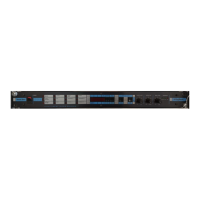
Do you have a question about the DigiTech IPS33 and is the answer not in the manual?
Introduces the SmartShift as an intelligent pitch shifter with various features.
Explains how the SmartShift produces harmony notes based on scales and keys.
Illustrates how to connect the SmartShift to an amplifier or mixer.
Details the process of adjusting input and output levels for optimal signal.
Provides detailed steps for unit setup, level adjustment, and signal balancing.
Describes how to use the built-in tuner and interpret its display indicators.
Details the use of HORIZONTAL and VERTICAL keys for menu and function selection.
Guides on choosing presets and how MIDI controls them.
Explains the distortion insert loop and the function of different audio output jacks.
Describes how to bypass pitch shifting via front panel or footswitch.
Explains the Detune feature, its modes (DET 1-4), and how to adjust detuning values.
Discusses saving custom settings as presets and the availability of factory presets.
Guides on modifying existing presets and saving changes.
Explains how to create and save custom harmony tables for each note.
Visualizes how presets combine Scales, Key, Transpose, and Detune settings.
Lists scale types and explains how to set the musical key.
Describes how to set transpose intervals for harmony generation.
Instructions on how to save changes made to presets.
Explains how to reset all presets to their original factory settings.
Describes the self-test mode and how to view the software revision number.
Explains how to set the SmartShift's MIDI receive channel, including OMNI and OFF modes.
Describes how to use MIDI Program Change messages to recall SmartShift presets remotely.
Details Sysex commands for dumping presets, harmony definitions, or all data, and loading data.
Provides tips for guitar, keyboard, horns, and voice performance with the SmartShift.
Explains how to view harmony note names using the display.
Lists and briefly describes the 15 main scale types supported by the SmartShift.
Details the five variations for handling accidental notes within scales.
Provides in-depth explanations of the Diminished, Modal, and Altered NST variations.
Offers practical advice on using the five NST variations in different musical styles.
Describes the characteristics and musical applications of Modal and Altered scale variations.